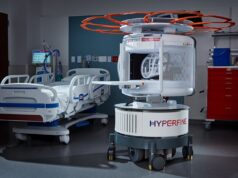 Neuro42, a US medical technology start-up focused on magnetic resonance imaging (MRI) and robotics, has announced the close of a US$6.5 million Series A financing round. Zepp Health led the financing round, and was joined by ShangBay Capital and prominent angel investors Krishna R Bhupal and Philip Dolan.
Neuro42, a US medical technology start-up focused on magnetic resonance imaging (MRI) and robotics, has announced the close of a US$6.5 million Series A financing round. Zepp Health led the financing round, and was joined by ShangBay Capital and prominent angel investors Krishna R Bhupal and Philip Dolan.
According to a company press release, the financing will enable Neuro42 to advance the development of the first-of-its-kind MRI and robot, and allow physicians to diagnose brain injury in acute settings and treat neurological diseases intraoperatively under live imaging. To date, the company has raised US$7.8 million—of which US$1.3 million came from an oversubscribed seed round that closed earlier this year.
“The investment will fast-track our progress in bringing our products to the masses, and creating a meaningful impact for neurophysicians and neurosurgeons in treating their patients,” said Amit Vohra, founder and CEO of Neuro42. “We are thrilled by the support of our investors who see the disruptive potential of MRI-guided interventions.”
Neuro42’s patient-centric approach will provide patients with cutting-edge technology as it works to expand frontiers of knowledge in the fields of neuroimaging, robotics, and artificial intelligence (AI), the release adds. The company was formed to focus on imaging and treatment of various brain conditions including stroke, hydrocephalus, epilepsy and various brain tumours.
“Neuro42 and its team of medical and scientific experts encompass deep industry knowledge, triggering the next wave of growth in the field of neuroimaging and interventions,” said Mike Yeung, COO of Zepp Health. “The company offers a unique and scalable opportunity, combining proprietary MRI technology with AI and robotics.”
One of the most significant advantages Neuro42’s technology brings to the market is that the novel scanner allows for robotic procedures outside of the traditional magnetic resonance suite, expanding the possibilities of intraoperative image guidance and disease treatment, the release concludes.













